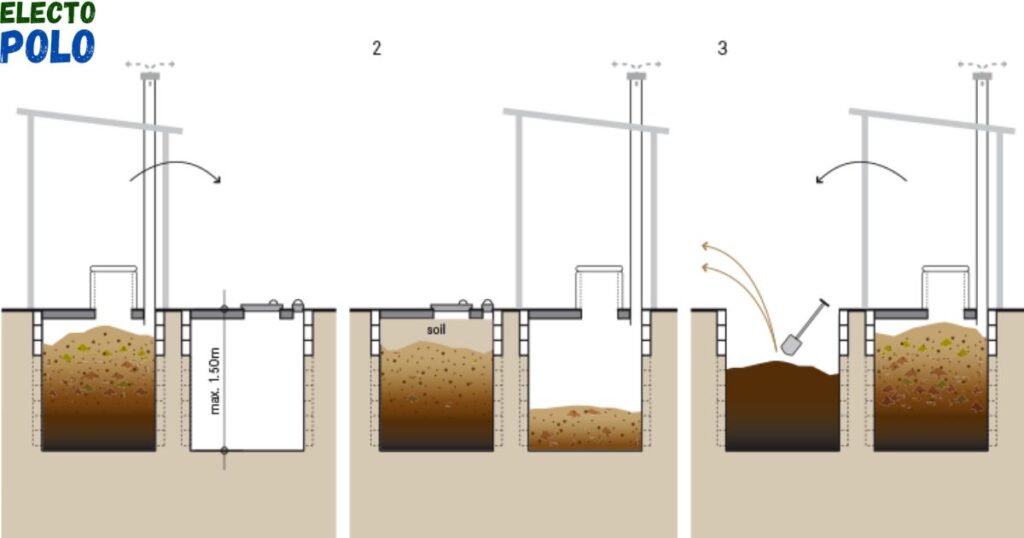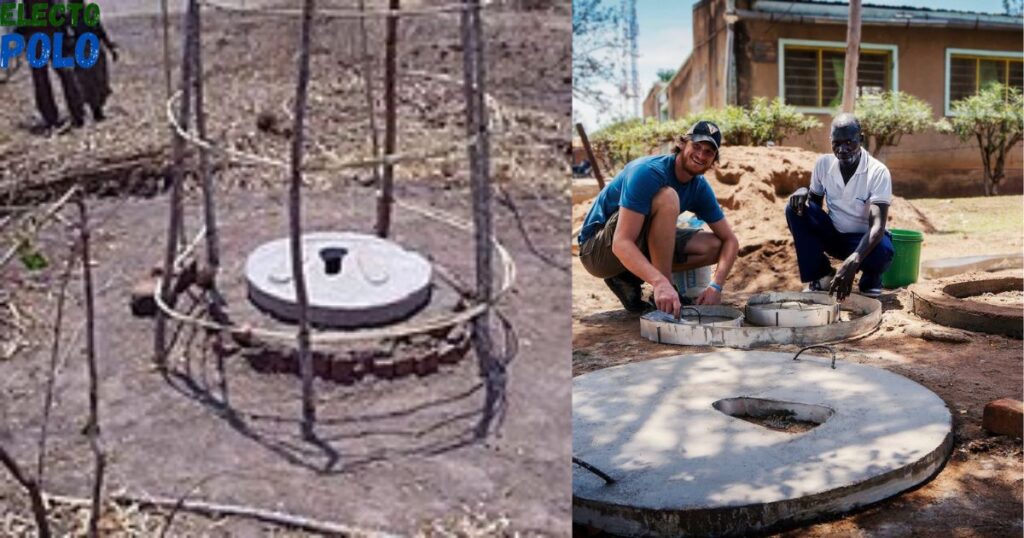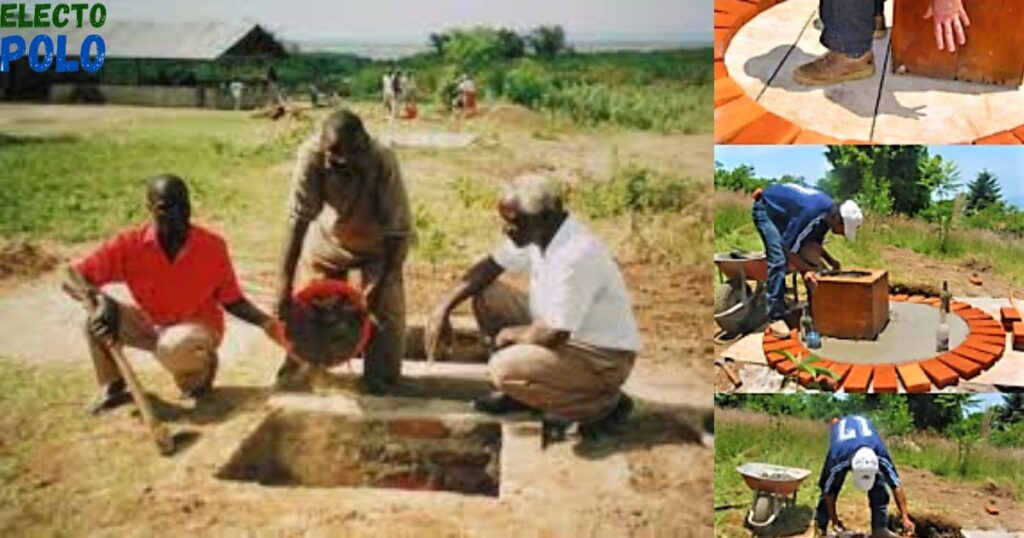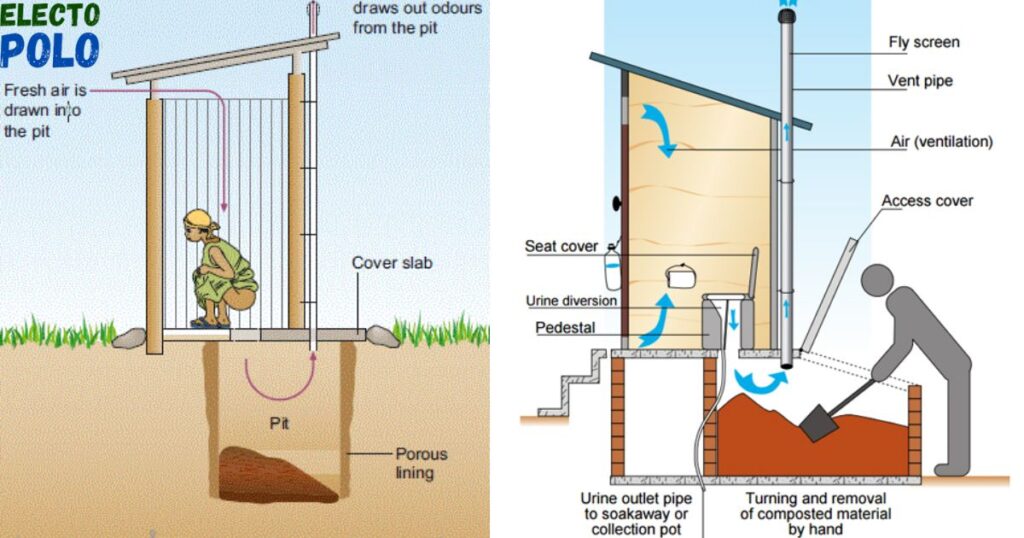Aborloo and Fossa Alterna are innovative sanitation solutions for rural and peri-urban areas. The IRC publication explores their combined potential to improve global sanitation access.
These systems offer low-cost, eco-friendly alternatives to traditional sewage systems. They turn human waste into valuable compost, benefiting both public health and agriculture.
The joint study highlights the complementary nature of Aborloo and Fossa Alterna. It emphasizes their impact on community health, environmental sustainability, and economic development.
What is Aborloo?
Aborloo is an innovative sanitation solution designed for rural and peri-urban areas with limited access to conventional sewage systems. This low-cost approach combines the simplicity of a pit latrine with the benefits of composting toilets.
The Aborloo system consists of a shallow pit covered by a simple superstructure. When the pit is nearly full, the superstructure is moved to a new location, and the old pit is covered with soil. This process creates a nutrient-rich compost that can be used for agriculture.
Goals of Aborloo
The primary objectives of the Aborloo project include:
- Improving sanitation access in underserved communities
- Reducing the spread of waterborne diseases
- Promoting sustainable waste management
- Enhancing soil fertility through composting
- Encouraging community participation in sanitation efforts
What is Fossa Alterna?

Fossa Alterna is another eco-friendly sanitation solution that shares similarities with Aborloo but offers some distinct advantages. It consists of two shallow pits used alternately, with a movable superstructure.
This system allows one pit to be in use while the contents of the other pit decompose into safe, nutrient-rich compost. The alternating use of pits ensures a continuous sanitation solution without the need for frequent relocation.
Benefits of Fossa Alterna
Fossa Alterna offers several key benefits:
- Continuous operation without interruption
- Efficient land use due to alternating pits
- Reduced odor and fly problems
- Improved safety for users
- Enhanced composting process
How Do Aborloo and Fossa Alterna Work Together?
The joint publication by IRC explores how these two sanitation solutions can complement each other in addressing the diverse needs of different communities. While both systems share the goal of improving sanitation and creating usable compost, they offer unique advantages that make them suitable for various scenarios.
Collaborative Efforts and Outcomes
The collaboration between Aborloo and Fossa Alterna projects has led to:
- Shared research and development
- Improved implementation strategies
- Enhanced community education programs
- Optimized resource allocation
- Increased adoption rates in target areas
Read This Blog: Skateboard Frog with a 40oz Birdhouse: A Unique Blend of Fun and Functionality
What Are the Key Findings from the Joint Publication?

The IRC publication highlights several important findings from the combined efforts of Aborloo and Fossa Alterna projects:
- Increased sanitation coverage in participating communities
- Reduced incidence of waterborne diseases
- Improved agricultural yields due to compost use
- Greater community engagement in sanitation initiatives
- Cost-effective solutions for rural and peri-urban areas
Impact Analysis
The impact of these projects has been significant:
- Health improvements: Reduction in diarrheal diseases and other sanitation-related health issues
- Environmental benefits: Decreased water pollution and soil contamination
- Economic gains: Increased agricultural productivity and reduced healthcare costs
- Social impact: Improved dignity and quality of life for community members
What Are the Benefits and Drawbacks of the Projects?
Aborloo and Fossa Alterna offer significant benefits to communities. These include low-cost implementation, environmentally friendly waste management, and improved public health outcomes.
However, these projects face some challenges in their implementation. Cultural barriers to adoption and limited suitability for densely populated urban areas are notable drawbacks.
Regular maintenance requirements and potential land availability concerns in some regions also pose challenges. Despite these drawbacks, the overall impact of these projects remains positive for many communities.
Benefits:
- Low-cost implementation
- Environmentally friendly waste management
- Improved public health
- Community empowerment
- Sustainable agriculture support
Drawbacks:
- Cultural barriers to adoption in some communities
- Limited suitability for densely populated urban areas
- Potential groundwater contamination if not properly implemented
- Regular maintenance requirements
- Land availability concerns in some regions
User Feedback and Community Impact

The joint publication emphasizes the importance of user feedback in refining and improving both sanitation solutions. Community members have reported:
- Increased satisfaction with sanitation facilities
- Greater awareness of hygiene practices
- Improved sense of ownership over sanitation infrastructure
- Positive changes in agricultural practices
- Enhanced community cohesion through shared responsibilities
Long-Term Community Benefits
The long-term benefits observed in communities implementing Aborloo and Fossa Alterna include:
- Sustainable waste management practices
- Improved food security through enhanced soil fertility
- Reduced healthcare costs due to improved sanitation
- Increased economic opportunities in agriculture and sanitation sectors
- Enhanced resilience to climate change impacts
How Are Aborloo and Fossa Alterna Implemented?
Aborloo and Fossa Alterna implementation begins with community engagement and education. Site selection and assessment follow, ensuring suitable locations for the systems.
Construction of pits and superstructures is carried out using locally available materials. Proper training on use and maintenance is provided to community members.
Ongoing support and monitoring are essential for long-term success. Regular check-ins and adjustments help optimize system performance and community adoption.
Challenges in Implementation
Despite their benefits, the implementation of these sanitation solutions faces several challenges:
- Limited awareness of alternative sanitation options
- Resistance to change from traditional practices
- Lack of skilled labor for construction and maintenance
- Funding constraints for widespread adoption
- Regulatory barriers in some regions
Read This Blog: Swanky Jerry’s Net Worth, Wife, and Is The African Stylist Gay?
What is the Future of These Projects?

The joint publication outlines a promising future for Aborloo and Fossa Alterna projects, with several key areas of focus:
- Technological improvements to enhance efficiency and user experience
- Expanded research on long-term environmental impacts
- Increased collaboration with government agencies and NGOs
- Development of standardized guidelines for implementation
- Exploration of urban applications for these solutions
Sustainability and Growth
To ensure the long-term success and growth of these projects, the publication recommends:
- Continued investment in research and development
- Strengthening partnerships with local and international organizations
- Developing sustainable funding models for widespread implementation
- Enhancing community ownership and participation
- Integrating these solutions into national sanitation policies
Frequently Asked Questions
How long does it take for waste to turn into usable compost?
The composting process typically takes 6-12 months, depending on local conditions and management practices.
Can Aborloo and Fossa Alterna be used in urban areas?
While primarily designed for rural and peri-urban areas, modified versions are being explored for use in some urban settings.
What are the main differences between Aborloo and Fossa Alterna?
Aborloo uses a single moving pit, while Fossa Alterna employs two alternating pits, offering continuous operation.
How do these systems prevent groundwater contamination?
Proper site selection, shallow pit design, and adherence to guidelines help minimize the risk of groundwater contamination.
What kind of maintenance do these systems require?
Regular cleaning, addition of cover material, and proper waste management are essential for optimal performance and safety.
Conclusion
The joint publication by IRC on Aborloo and Fossa Alterna demonstrates the significant potential of these innovative sanitation solutions in addressing global sanitation challenges. By combining the strengths of both approaches, communities can benefit from improved health, environmental sustainability, and economic opportunities.
As these projects continue to evolve and expand, they offer a promising path towards achieving universal access to safe and sustainable sanitation. The success of Aborloo and Fossa Alterna underscores the importance of community-centered, environmentally friendly, and cost-effective approaches in tackling one of the world’s most pressing development issues.
The future of these projects lies in continued research, broader implementation, and increased collaboration among stakeholders. By building on the lessons learned and addressing the challenges identified, Aborloo and Fossa Alterna can play a crucial role in improving sanitation access and public health in underserved communities worldwide.

I’m passionate electric scooter enthusiast and the voice behind this blog. I’m here to share my expertise and insights with you. From in-depth reviews to problem-solving guides, my goal is to help you make the most of your electric scooter experience.








![Gomyfinance.com Invest: I Made $5,000 in My First Month [Real Results 2025]](https://electopolo.com/wp-content/uploads/2025/05/Gomyfinance.com-Invest-I-Made-5000-in-My-First-Month-Real-Results-2025-150x150.jpg)

